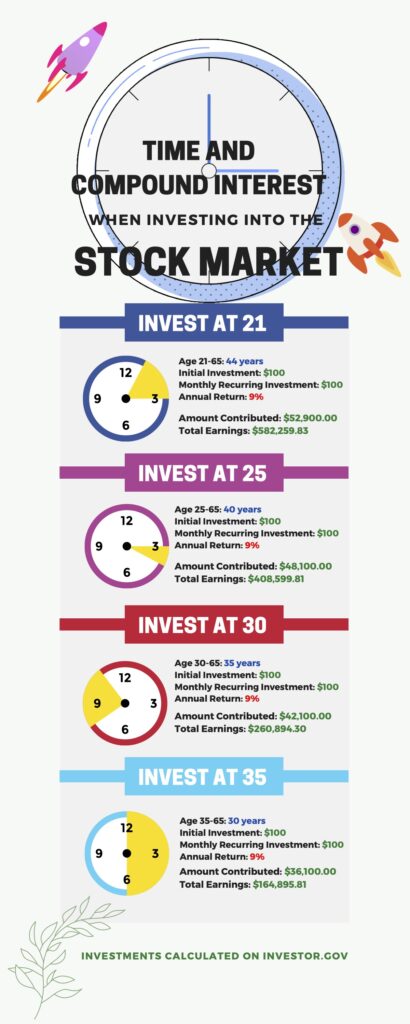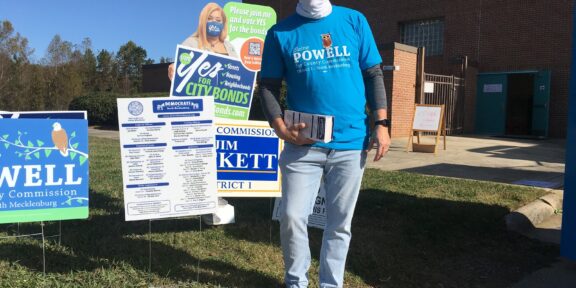Lynn Pierce, Reimagined Futures for Howard University News Service
Mark Monroe, co-creator of the Come Up Series and Principle Manager Partner of RedEye Studios, was introduced to investing at the age of 9 by his grandfather. The cool story of a kid investment guru who prophetically developed into a serial investor and a multi-million dollar venture capitalist could be the furthest truth from what actually occurred.
Monroe’s initial profit wasn’t monetary but rather his grandfather’s ‘two cents’. This invaluable knowledge and wisdom taught Monroe principles and ideas such as the value of time, cost and worth. Many years later as a freshman at Tuskegee University, disregarding his professor’s advice to avoid the risky stock market and his personal limitations of capital, he began actively investing.
Investing nearly two decades ago was much different than what it is now for new or current investors. “Technology was primitive in comparison to what we have now. The market is so much faster,” Monroe stated when comparing what it was like as he began investing in the early 2000’s to current day.
In recent years, the advancements in technology and accessibility has contributed to a disruption in investing practices, truly revolutionizing retail investing. For college students or any new investors, investing in today’s market has become more advantageous.
As Monroe did and many others have, using refund checks, internships, jobs and various side hustles has shown to be a window into investing. Coupled with the revolution of retail investing, there’s an opportunity for college students to use investing as a tool to begin building wealth and paying off debts.
This emergence of retail investing has created a snowball effect amongst investors. Multiple reports have acknowledged this major increase.
According to Bloomberg Intelligence, through June of 2020, individual stock trading was at a 10-year high, with retail trades estimated to account for about 20 percent of all US orders, up 10.1 percent in 2010 and 14.9 in 2019. Bank of America reported similar statistics that the dollar value of U.S. stocks and ETFs traded by retail investors was up 78 percent year over year in June.
For those unfamiliar with retail investing, think of retail investing as David. The little guys or gals who are not professionals but buy or sell securities, stocks, or funds. Typically, retail investors have less time to allocate towards investing and are heavily influenced by the media.
On the contrary, there’s institutional investing. Institutional investing could be thought of as Goliath. These are institutions who make investment decisions on behalf of some of the little guys and gals, shareholders and also institutions. Institutional investors normally make large scale investments, allocate substantial more time to investing, and have extensive resources and access.
Traditionally, investing would incorporate outlining goals and investing strategies with some sort of investment or financial advisor under the institutional investing umbrella. There would also be fees, a substantial initial investment (ex. $3,000.00 minimum to investment) , and sometimes a mandatory recurring investment.
Technological investment platforms such as Robinhood, Webull, SoFi and Cash App have disrupted that traditional method of investing, thus creating more retail investors. Robinhood, who could be considered the poster child for retail investors, as of 2020 had 13 million users from 10 million users in 2019 with expectations to be 20 million in 2021.
During a revolt against Robinhood in late January due to the Gamestop controversy over the investing platform stopping trades, rival investing app Webull disclosed that downloads were up 1,548 percent compared with the usual seven-day average. Throughout 2020, Webull’s active user roster went from 750,000 to over 2 million active users.
The trends that benefit retail investors on these platforms include: quick application process, no commission on trades, low price or no fees, no balance minimum and ability to purchase a fraction or slice of a share.
Another trend is the playful, interactive interfaces when using some of the investment apps. Despite the ongoing polarization of this gaming appeal, the gamification of these platforms helps with attracting and retaining customers.
Robert Farrington, the founder of The College Investor, specializes in teaching investing, personal finances, and student loan debt for college students and millennials. Farrington stated in a written post on his website that there’s an advantage to using low to no commission fees offered by technological investment platforms for new investors, more specifically for college students.
“Over the last decade, technology has made investing available to everyone for a low price – even free. Gone are the days where you had to sit down with an “investment advisor” and plan out your investments (for a high cost),” Farrington said.
Farrington, who also began investing as a freshman during college, spent time at the library in between classes to look for investments and make online trades. Using his Sharebuilder account , he set up automatic investing for $4 per trade. At the time, $4 per trade was considered a low fee and unheard of for commissions.
Beyond taking advantage of today’s low prices to even free fees because of retail investing, there’s a more significant reason for college students to consider investing. As Monroe learned under his grandfather’s tutelage and Farrington candidly pointed out, time is one of the most significant reasons for students to invest.
“One factor in building wealth is time and to let it grow. Time is always working against us, time is the enemy of every person on earth. We all have just a finite amount of time here,” Farrington also stated, “As such, you don’t want to waste time with your money that could be compounding and working for you. You only get to be 20, 22, 25 once. It’s a lot easier (and cheaper) to grow wealth early than waiting until your 30s or 40s.”
According to Monroe and Farrington, “time in the market beats timing the market”. This is primarily because of compound interest and how it works. However, understanding time in the market beats timing the market doesn’t mitigate all risks associated with investing.
There’s an “information and risk appetite” that is conjoined with investing. Knowing the information and risk appetite as an individual investor is essential when investing. As Monroe plainly and simply put it, “98 percent of all retail investors will lose 100 percent of what they invested”.
Therefore, the gambling, get rich quickly investing approach that has been discussed amongst many experts and reported by media outlets, isn’t the recommended approach for any new investor, let alone students who are juggling classes, jobs, internships and social lives.
More effectively is treating a stock similar to a final exam. James Royal, author of “The Zen of Thrift Conversions: How To Turn Hidden Bank Stocks Into Big Gains” recommended just studying stocks before investing into a company. This means getting to know the market and getting to know the companies.
Monroe concurred, specifically suggesting to come up with five companies that are publicly traded and studying them over a period of time. This intentional careful approach of researching and studying the market and stocks before deploying cash reduces the expected increased risk that comes with retail investing.
“For every new investor, not so much as just for a college student, it’s not about getting rich quickly, but getting rich carefully. It takes time.”
Beyond just understanding how time can compound into wealth and how using stocks can manifest this wealth, investing or trading could also be used to pay student loans and other debts.
Teri Ijeoma, CEO of Invest with Teri, a platform that teaches investment, provided a brief overview of how she teaches her students to use investing and trading stocks to pay debts.
“Make a goal, break it down into smaller bite size pieces. Figure how much money you actually need in the account to make that goal work. Start saving up enough in your accounts to generate these rewards. After that, it’s about paying attention to the market to trade and investing the money. The cool thing is, once you get this money in your account, the initial investment is still there. And then you can invest again to pay off something else or travel.”
Ijeoma created Trade and Travel to teach people how to intentionally use the stock market to pay off debts, like she once did. In paying off their debts with investing and trading, people could enjoy and obtain a better life.
Ijeoma used trading to pay off her $17,000 student loan debt within 30 days. Not bad for an honest month’s work. Her investing and trading acumen was cultivated while attending Massachusetts Institute of Technology and also through a Wall Street internship.
The pace of college has a way in fostering students to be quick thinkers, flexible, and determined. These are some of the same skills that allowed Ijeoma, Monroe, and Farrington to be successful investors. These characteristics are additional advantages for college students while investing.
“The biggest things college students have as advantages are that you all know how to think. You know how to be quick on your toes, you know how flexible.” Ijeoma continued. “The ones that are able to do well, they really have grit. They just go after it, they make sure they watch all of the curriculum, willing to try. There’s also initiative. Like you gotta be able to take initiative and not have fear and go for it. You got to have the initiative to jump off the sidelines and just try it.
Investing while in college seems to be an opportunistic stomping ground. The advancements in technology and accessibility to retail invest has only enhanced the opportunity to build wealth and pay off debts.
“You don’t have to win every trade because your rewards are gonna be higher than your losses. You can win 40 percent of your trades and lose 60 and still make enough money. Work towards that 40 percent win rate. It may be lower in the beginning. You may only win 10 percent and lose more trades than not, but keep working at, keep practicing, and if you can get that up by the time you graduate, then you can kill it,” Ijeoma advised.














